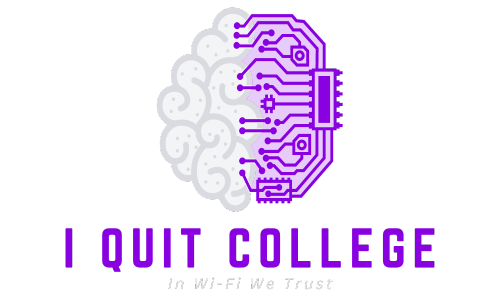Standing out in a crowded market is key to gaining a competitive advantage and achieving success. With an increasing number of high street and online retailers, it’s essential for businesses to find innovative ways to differentiate themselves from the competition. By implementing strategic tactics and focusing on market positioning and brand differentiation, businesses can elevate their presence and attract the attention of their target audience.
Researching competitors is the first step towards standing out in the market. By understanding what your competitors are doing, you can identify gaps in the market and carve out your unique position. Knowing your target audience is equally important. By understanding their needs, preferences, and pain points, you can tailor your offerings to meet their specific requirements.
Personalizing your offers and focusing on branding are crucial elements in standing out. By creating a strong and consistent brand identity that showcases your unique value proposition, you can make a lasting impression on your customers. Embracing innovation is also key. By constantly evolving and staying ahead of the market, you can capture the attention and loyalty of your target audience.
Effective communication, leveraging social responsibility, utilizing customer reviews, positioning yourself as an expert, and targeting seasonal opportunities are additional strategies that can help your business stand out in a competitive market.
With the right combination of market knowledge, personalized approach, and innovation, businesses can differentiate themselves from the competition and achieve long-term success in a crowded marketplace.
Key Takeaways:
- Research your competitors to identify gaps in the market.
- Understand your target audience’s needs and preferences.
- Create a strong and consistent brand identity.
- Embrace innovation to stay ahead of the competition.
- Utilize effective communication and leverage social responsibility.
Know the Competition
When it comes to standing out in a competitive market, having thorough knowledge of your competition is key. Understanding their branding, market positioning, and successful strategies can provide valuable insights and help you position your own business effectively. To gain a competitive advantage, conducting a comprehensive competitor analysis is essential.
Begin by researching your direct competitors. Analyze their online presence, including their website features, social media channels, and customer offerings. By closely examining their strengths and weaknesses, you can identify areas where you can improve and learn from their mistakes.
Furthermore, studying their market positioning can give you a clear idea of how you can differentiate your business. Identifying the unique selling points of your competitors and understanding what sets them apart in the market allows you to strategically position your brand to stand out.
During competitor analysis, pay attention to their customer reviews, as they can provide valuable insights into what customers value and appreciate about their products or services. Leverage this information to create your own compelling value proposition and enhance your market positioning.
“Knowing the competition is the first step to beating the competition.” – Jeffrey Benjamin
An effective competitor analysis provides you with inspiration and ideas to innovate your own business strategies. By understanding what works for your competitors, you can adapt and improve upon their successes, gaining an edge in the market.
| Competitor | Branding | Market Positioning | Successful Strategies |
|---|---|---|---|
| Brand A | Modern and minimalist | High-end luxury | Collaborations with influencers |
| Brand B | Vibrant and playful | Affordable and trendy | Engaging social media campaigns |
| Brand C | Elegant and sophisticated | Timeless classics | Exceptional customer service |
By analyzing your competitors and incorporating their successful strategies into your own business approach, you can differentiate yourself in the market and gain a competitive advantage. However, it’s important to maintain your unique brand identity and value proposition to ensure authenticity and attract your target audience.
Know Your Audience
Understanding your target audience is crucial for effective marketing and service customization. By identifying the characteristics of your audience, such as age, gender, interests, income, and preferences, you can create a detailed customer profile. This profile will guide your marketing efforts and enable you to tailor your offers to meet their specific requirements.
Personalizing your approach and focusing on individual customer needs can help differentiate your business from competitors. By delivering a personalized experience, you are showing your audience that you understand and care about them, building trust and loyalty. This deep connection with your customers will give you a competitive advantage in the market.
Creating Customer Profiles
One effective way to know your audience is by creating customer profiles. These profiles act as personas representing your target market segments, allowing you to customize your marketing strategies accordingly. When creating customer profiles, consider the following:
- Demographics: Age, gender, location, income, and education.
- Interests and Hobbies: What do they enjoy doing in their free time?
- Preferences and Behavior: How do they prefer to communicate? What are their shopping habits?
| Demographics | Interests and Hobbies | Preferences and Behavior |
|---|---|---|
| Age: 25-34 | Interests: Fitness, Travel | Communication: Social Media, Email |
| Gender: Female | Hobbies: Hiking, Cooking | Shopping Habits: Online, Deal Seeker |
| Location: New York City |
By understanding your audience’s demographics, interests, and behavior, you can create targeted marketing campaigns that resonate with them, resulting in higher customer engagement and conversions. Remember, effective communication with your audience is key to building lasting relationships and gaining a competitive edge.
Knowing your audience is an ongoing process. Stay updated with market trends, conduct regular customer surveys, and analyze data to ensure that your customer profiles remain accurate and relevant. When you truly know your audience, you can deliver exceptional experiences that set you apart from your competitors.
Branding
In a competitive market, strong branding is essential to stand out from the crowd. It is the key to defining your business’s unique identity and communicating it clearly and consistently to your target audience. Effective branding allows you to differentiate your brand from competitors and establish a compelling unique selling proposition.
Whether you position your brand as a luxury or value-oriented, it’s crucial to capture and showcase what makes your business distinct. Your branding should align with your target market’s preferences and resonate with their aspirations and values. By doing so, you can create an emotional connection with your customers and foster brand loyalty.
“Your brand is what other people say about you when you’re not in the room.” – Jeff Bezos
A strong brand identity plays a vital role in making your business memorable and recognizable. Consistency in visual elements, such as logos, colors, and typography, enhances brand recall. Additionally, clear messaging and a unique voice contribute to brand recognition and recall. When customers can easily identify your brand, it gives you a competitive advantage in a crowded market.
Furthermore, branding goes beyond visual elements and messaging – it encompasses the overall customer experience. By consistently delivering exceptional products and services, you reinforce your brand’s promises and build trust with your customers.
Let’s take a look at the following table to better understand the key elements of effective branding:
| Elements of Effective Branding | Description |
|---|---|
| Brand Positioning | Clearly defining your brand’s unique value proposition and how it differs from competitors. |
| Visual Identity | Consistent use of logos, colors, typography, and design elements to create a recognizable brand presence. |
| Messaging | Crafting a unique tone of voice and conveying your brand’s values, mission, and promises to resonate with your target audience. |
| Customer Experience | Ensuring consistent delivery of exceptional products, services, and interactions that align with your brand’s promises. |
By mastering the art of branding, you can create a strong market differentiation that sets your business apart from the competition. A well-established brand identity not only attracts new customers but also fosters customer loyalty and advocacy.

Innovation
Embracing innovation is crucial for businesses to stay relevant in today’s competitive market. It can be tempting to stick with what works, but by seizing opportunities to experiment and introduce new products or features, businesses can disrupt the market and capture the attention of customers.
Regularly surprising and delighting customers through innovation cultivates loyalty and a sense of anticipation. It keeps customers engaged and eager to see what’s next, giving businesses a competitive edge.
“Innovation distinguishes between a leader and a follower.” – Steve Jobs
The Power of New Features
Introducing new features not only attracts attention but also shows that your business is continuously evolving and adapting to meet customer needs. These features can enhance functionality, improve user experience, or provide unique value that sets your business apart.
A great example of successful innovation through new features is Apple’s introduction of Face ID in their iPhone X. This revolutionary feature disrupted the market and created a new standard for mobile security.
Market Disruption Through New Products
New products can disrupt the market by offering something different and appealing to customers. Consider the impact of electric vehicles on the automotive industry. Companies like Tesla have reinvented the concept of personal transportation and have forced traditional automakers to adapt or risk becoming irrelevant.
Innovation is not limited to technology-based products. It can also involve creative packaging, sustainable materials, or unique services that address customer pain points.
By embracing innovation and constantly seeking new ways to improve and differentiate your offerings, your business can establish a reputation for being cutting-edge and forward-thinking.
| New Products/Features | Market Disruption |
|---|---|
| Apple introducing AirPods with wireless charging | Shifted the headphone market to wireless technology |
| Beyond Meat launching plant-based meat alternatives | Created a new category and challenged the traditional meat industry |
| Netflix revolutionizing the media industry with streaming | Disrupted the DVD rental market and transformed how people consume entertainment |
These examples demonstrate the power of Innovation in staying relevant and disrupting markets. Businesses that prioritize innovation and continuously seek opportunities to evolve and improve are more likely to stand out and thrive in a crowded marketplace.

Conclusion
In today’s competitive market, standing out is crucial for businesses to gain a competitive advantage and achieve market differentiation. By incorporating the mentioned tips and strategies, businesses can elevate their brand, differentiate themselves from the competition, and ultimately achieve market recognition and success.
A strategic approach begins with market positioning, where businesses identify their unique value proposition and target audience. Understanding the competition and conducting thorough competitor analysis allows businesses to identify areas for improvement and learn from successful strategies. Additionally, knowing the target audience enables businesses to personalize their offers and tailor their marketing efforts to meet specific customer needs.
Strong branding is another key element in standing out in the market. By defining and expressing their brand identity clearly and consistently, businesses can capture what makes them distinct and create a memorable impression in the minds of customers. Embracing innovation and regularly introducing new products or features also helps businesses stay relevant and disrupt the market. Effective communication, both online and offline, further boosts a business’s competitive advantage by engaging with customers and showcasing their unique value.
By implementing these strategies, businesses can position themselves as leaders in their industry and create a clear competitive advantage. Standing out in the market requires continuous effort and adaptation, but with the right approach, businesses can differentiate themselves, attract customers, and achieve long-term success.






